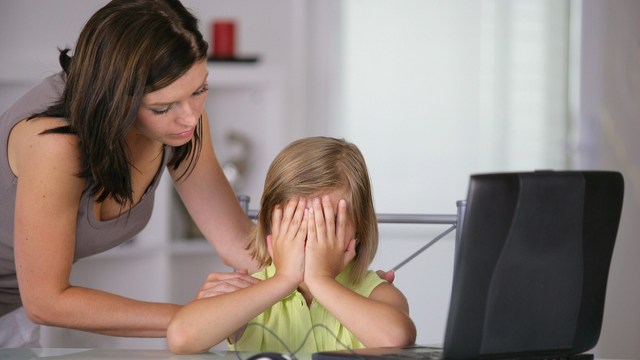 Auremar/PhotoSpin
Auremar/PhotoSpin
Growing Pain Myth #1 – Every child has growing pains.
Truth – Only 25 to 40 percent of children have growing pains at some point. Growing pains are usually more common between ages 3-5 and between 8-12. They can affect girls and boys equally, but are more common in girls. (3)
Growing Pain Myth #2 – Growing pains are caused by bones growing.
Truth – “There’s no evidence that the pain is caused by growing bones.” (3) “[B]ones grow slowly, even during growth spurts, and this slow growth does not cause pain.” (1)
It is more likely growing pains may be caused by:
• Poor posture – If your child stands, sits or walks awkwardly, he/she is putting greater strain on his/her muscles. (1)
• Stress or unhappiness, although this is not often the case in true growing pain situations (1)
• Tired muscles. Children play hard and this may be the most likely cause of muscle pain. (1)
Growing Pain Myth #3 – Pain can happen anytime, anywhere and involve muscles and joints.
Truth – Growing pain symptoms may include:
• Muscular aches and pains in both legs (calf, behind the knee and front of the thigh) and, sometimes in the arms
• Pain does not worsen with movement of the legs indicating the pain is in the muscles not the joints
• Intermittent or occasional pain lasting about 10 to 15 minutes and “affecting both sides of the body similarly (although not necessarily at the same time).” (3)
• Pain usually happens in the late afternoon or evening, or during the night, but is usually gone in the morning
• Headaches, but not fever, chills, redness, swelling, limping, or joint pain
Growing Pain Myth #4 – It’s just growing pains. There’s no need to see a doctor.
Truth – There are body aches and pains that should be examined by a doctor, such as:
• Pain in one particular spot, which may need X-rays or a bone scan
• Fever with the leg pain, without any other flu-like symptoms
• Difficulty or inability to put weight on one leg, or limping
• Persistent pain through the day
• Pain that your child is afraid to have you touch -- “If the pain is muscular, it’ll feel good to be massaged. If something else is going on, though, it may hurt more if you touch it.” (3)
Also, if you notice that your child’s foot or feet roll or he/she trips a lot, it may be worth a trip to a podiatrist to examine your child’s posture and legs, and, perhaps, change of footwear to something more supportive.
Growing Pain Myth #5 – There’s nothing you can do for growing pains.
Truth – There are things you can do to ease your child’s growing pain symptoms such as:
• A heating pad or hot water bottle or warm bath
• Give the correct dose of acetaminophen or ibuprofen (but not aspirin)
• Gentle stretching and massage
Sources:
1) Growing pains. Better Health Channel. Web. June 24, 2013.
http://www.betterhealth.vic.gov.au/bhcv2/bhcarticles.nsf/pages/Growing_pains
2) Growing Pains. Mayo Clinic. Web. June 24, 2013.
http://www.mayoclinic.com/health/growing-pains/DS00888
3) Growing Pains. Lane, Ann. BabyCenter.com. Web. June 24, 2013.
http://www.babycenter.com/0_growing-pains_1388141.bc
Reviewed June 24, 2013
by Michele Blacksberg RN
Edited by Jody Smith





Add a CommentComments
There are no comments yet. Be the first one and get the conversation started!